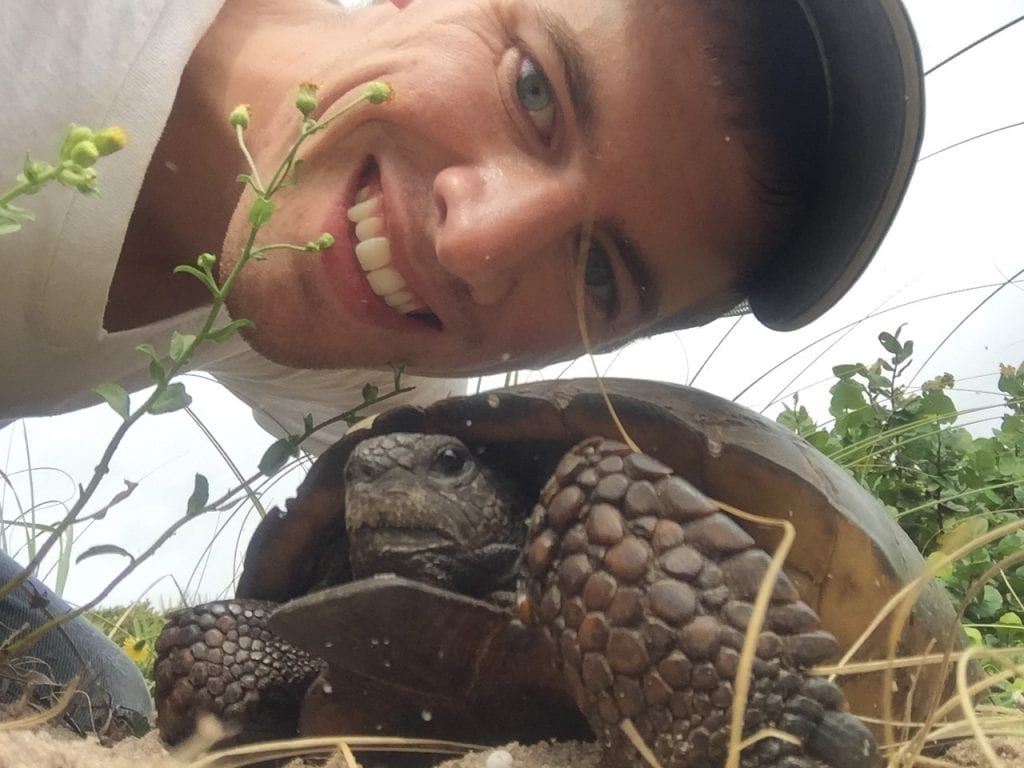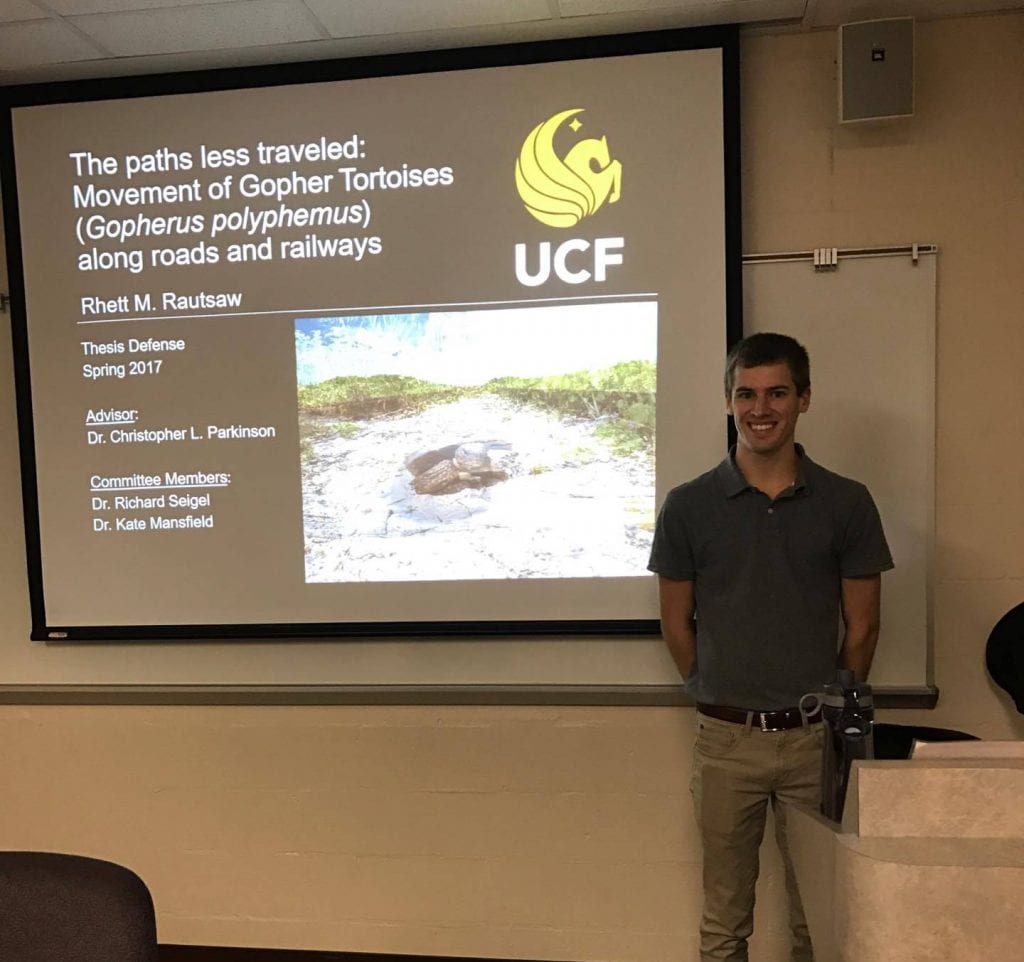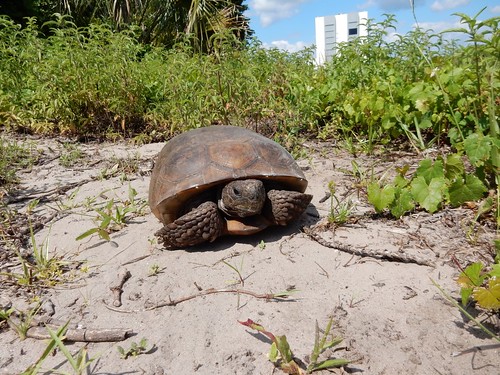A Wild Win for UCF Biology Student

UCF biology student Rhett Rautsaw researched a new method to survey for gopher tortoises and other wildlife.
Rhett Rautsaw, a master’s student in UCF Department of Biology, won first place for his presentation at the 38th annual Gopher Tortoise Council Meeting in Palatka, Florida held January 13-15, 2017.

Rhett Rautsaw defending his master’s thesis at the University of Central Florida.
Rautsaw was representing the university at the meeting where he was awarded first place for his oral presentation on a new method to survey for gopher tortoises and other wildlife. This presentation expands on an aspect of his master’s thesis which he successfully defended only a few hours before leaving for the meeting.
Rautsaw is working with UCF biology Professor Christopher Parkinson, Ph.D., to examine the effects of transportation infrastructure, such as roads and railways, on the movement patterns of gopher tortoises at Kennedy Space Center.
Gopher tortoises are federally threatened throughout their distribution and are vital to natural ecosystems because the burrows they dig provide shelter for many other forms of wildlife. By examining the movements of these animals, Rautsaw hopes to learn more about their ecology and help develop better conservation and management strategies. The results of his thesis research have recently been submitted to two scholarly journals.
At the Gopher Tortoise Council Meeting Rautsaw presented one aspect of a collaborative research project to develop new methods to document animal biodiversity. The new method involves the use of game cameras and a sampling technique called drift fencing to photograph animals like gopher tortoises as they move through their habitat.

Bridgett Vincent, Rhett Rautsaw, and Katelyn Lanctot at the annual Gopher Tortoise Council Meeting.
Rautsaw’s talk, “Updating the Drift Fence: Applying Game Cameras to Survey Herptofauna and Small Mammals,” reported on the success of this new method and was awarded the meeting’s first place student presentation award.
Two UCF undergraduate students, Katelyn Lanctot and Bridget Vincent, also presented posters at the meeting. Both students are sophomore biology majors who did research with Rautsaw over the summer.
Lanctot’s poster was entitled, “Wildlife Corridors: Evaluating organismal movement between fragmented habitats” and Vincent’s entitled “Stopped Dead in Their Tracks: Assessing the Effects of Anthropogenic Barriers on Gopherus Polyphemus.”
Because of their work with Rautsaw’s research through the summer and fall semesters, both students will be included as coauthors on the pending publications.
More information can be found at: http://rhettrautsaw.wixsite.com/rhettrautsaw
Click the below photo to view more photos.

